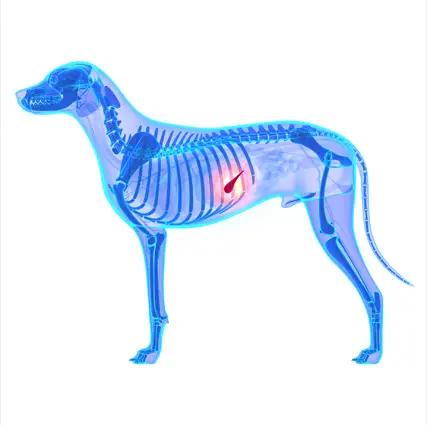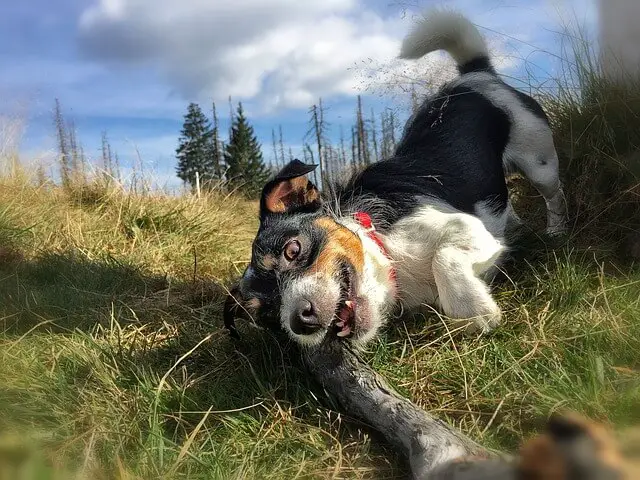Pancreatitis In Dogs: Causes, Symptoms & Treatment
10.01.2021.
As dog owners, it is our duty to keep our dogs safe and healthy. The best way to do that is to learn about problems like pancreatitis. The symptoms might not be too obvious, and this medical problem is often mistaken for something less sinister and dangerous. The worst thing that can happen is that we lose our beloved pet because we weren’t paying attention.
Here is what you need to know about pancreatitis in dogs.
What is pancreatitis?
The easiest way to describe pancreatitis would be - the inflammation of the pancreas. If you are not a vet, this definition might not be enough, so first, here is what you need to know about a dog’s pancreas.
Pancreas
The pancreas is a small organ that helps a dog’s digestion. It is an organ that produces enzymes that become active when they reach the small intestine. However, if a dog has pancreatitis, these enzymes activate as soon as they are produced. In the worst cases, they start digesting the pancreas, which causes extreme pain to the affected dog. Not only will the pancreas be affected, but also all surrounding tissue and organs will become inflamed.
Do you know what to do if your dog is constipated? Here is a helpful article - Dog constipation.
What causes it?
Sometimes, owners think pancreatitis came out of nowhere, and there are no clear signs like in other diseases. If a dog gets rabies, it has most likely been bitten by an infected animal. If they get a parasite, they most likely picked it up from a contaminated area. Pancreatitis comes quietly, but it causes a lot of problems.

However, thanks to the advancements in veterinary medicine and science, we now know what causes this medical issue, and some of the most common causes are:
- Dietary indiscretion (dogs eat things they are not supposed to)
- A diet that contains a lot of fat
- Hypothyroidism
- Genetic predisposition (not often, but possible)
- Diabetes
- Blunt trauma
- Medications
- Obesity
- Toxins
Dog pancreatitis symptoms
Like we mentioned earlier, pancreatitis symptoms can be hard to spot, so you will have to know what to look for. It is true that some of these symptoms, when isolated, might not be a sign of concern, but if your dog exhibits multiple symptoms at once, it would be best to call your vet right away. These symptoms are:
- Bloated abdomen (if a dog seems uncomfortable or bloated)
- Hunched back
- Constant vomiting
- Diarrhea
- Dehydration
- Loss of appetite
- Increased body temperature
- Lethargy
- Weakness

Different types of pancreatitis
There are two different types of pancreatitis vets classified. Just like some other medical issues, pancreatitis can be acute and chronic. Here are both definitions and differences.
Acute pancreatitis
Acute pancreatitis means there were no previous health problems with the pancreas and the attack came “out of the blue.” This is a severe issue that can potentially kill the affected dog if the inflammation isn’t contained and treated.
Chronic pancreatitis
The chronic type can be described as slowly-developing pancreatitis in dogs. It developed over time and caused different, often minor, health problems. It can cause repeated acute attacks.
Both types are painful for the dog and can be either severe or mild.

How is it diagnosed?
There are different tests vets take to accurately diagnose pancreatitis in dogs.
American Veterinary Medical Association says that vets should do several of these tests to arrive at the best possible conclusion and accurately diagnose this medical issue. Here are the test vets do to reach a diagnosis;
- Medical history analysis
- Blood test where they measure pancreatic enzymes
- Ultrasound which is only used as a method of ruling out other causes
- Physical examination of the dog’s stomach, abdomen, gums, temperature, and heart
- Aspiration of the pancreas
One more serious problem that might be hard to notice is Cushing’s disease. Here is an article that can help with noticing it - Cushing's Disease In Dogs.

How is it treated?
Like with many other health issues, early detection is the key. The most important thing is to manage the affected dog’s pain and control the inflammation. By controlling the inflammation, vets avoid further health complications and problems. Here are the most common treatment options for dogs with pancreatitis:
- IV fluid therapy for the severe case of pancreatitis
- Non-stop monitoring of the dog whose condition is getting worse
- Withholding food and water for 24 hours (also called resting the pancreas)
- Switching to ultra-low fat food or specialized diets
- Monitoring the fat intake
- Switching to a few smaller meals rather than one large meal
- Controlling the amylase and lipase levels by a vet
In short
Pancreatitis is a potentially serious health problem that can cause a lot of pain for your dog. It can be prevented by controlling the dog’s diet and making sure the dog exercises. Obese dogs are prone to developing health issues, and pancreatitis is one of them. This is not a medical emergency that can be treated by at-home remedies, and it needs vets attention. Dogs can recover after a few days after seeking medical attention.
World Dog Finder team







Share